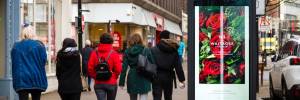Out of Home (OOH) advertising is part of the fabric of public spaces. If we’re not seeing a billboard on our daily commute, then we’re inspecting the poster next to us while we’re waiting for the bus.
And while the medium has been around seemingly forever, it consistently finds new ways to adapt to our changing society. One of the most recent changes has been the transition from OOH to DOOH.
DOOH stands for Digital Out of Home advertising. It works off the same concept that OOH does but incorporates technology that offers greater flexibility and creativity to advertisers.
There are many other benefits that Digital Out of Home provides but before we get to those, we have to first understand exactly what DOOH is. So, let’s start at the beginning.
What is Out of Home advertising?
Out of Home advertising (OOH) is a type of marketing that’s designed to target audiences while they’re outside of their homes. Common examples of this are bus stop posters, billboards and phone box adverts.
OOH is popular because it enables brands to reach large and diverse audiences easily and affordably. By coming into contact with people as they go about their daily lives, brands gain broad visibility in a non-intrusive way.
Although OOH is highly effective at building general brand awareness, it can achieve a lot more than just that.
Through the use of carefully considered placements, businesses can target specific audience groups with tailored messaging.
For example, a new, on-the-go breakfast cereal bar could target its primary market of commuters via adverts across public transport networks. The brand could then reach its secondary market – busy parents – by taking out supermarket advertising with separate, uniquely relevant messaging.
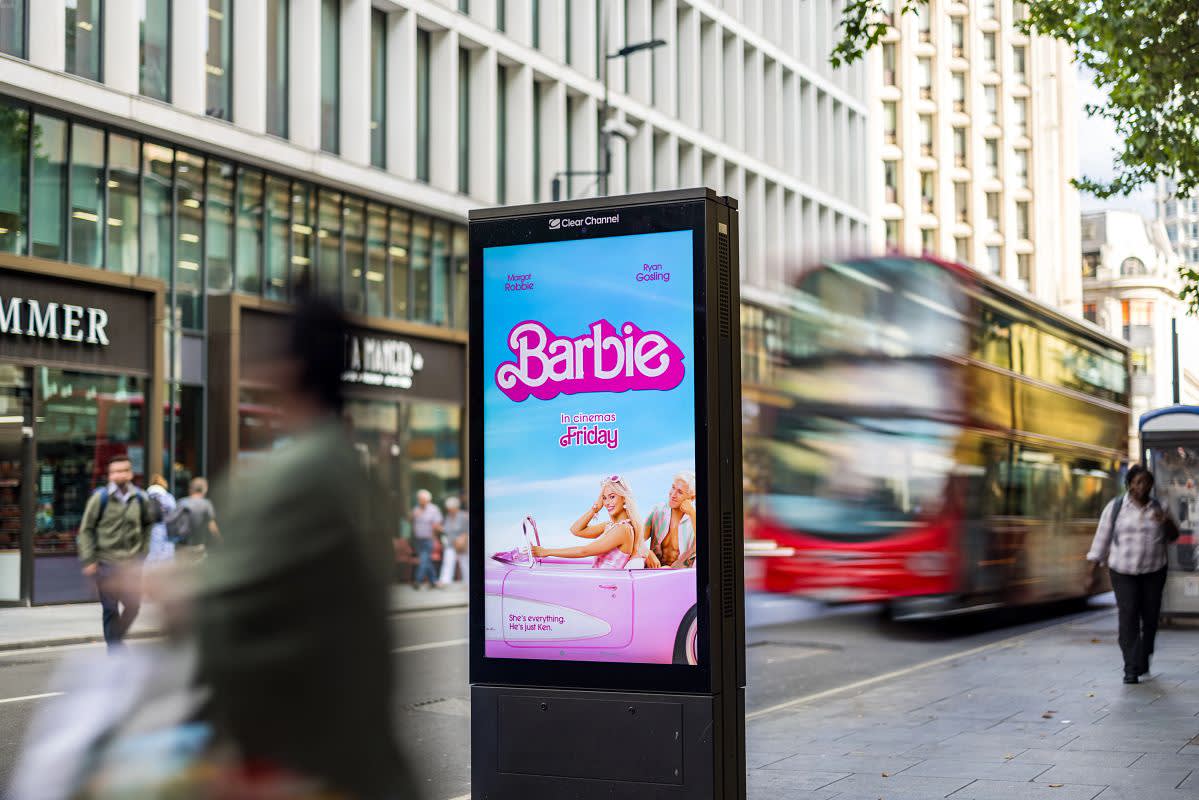
So what’s Digital Out of Home advertising?
Digital Out of Home (DOOH) advertising is defined as a type of outdoor advertising that diverges from traditional OOH through its use of exclusively digital formats. There are a few other differences between OOH and DOOH but we’ll get to those in a minute.
Examples of DOOH include digital billboards, digital posters in bars and pubs, digital signage in shopping malls and digital street furniture.
New York’s Times Square is generally credited with hosting the first ever digital advertising display. In the 1940s, legendary advertising executive Douglas Leigh designed a revolutionary billboard and the rest, as they say, was history.
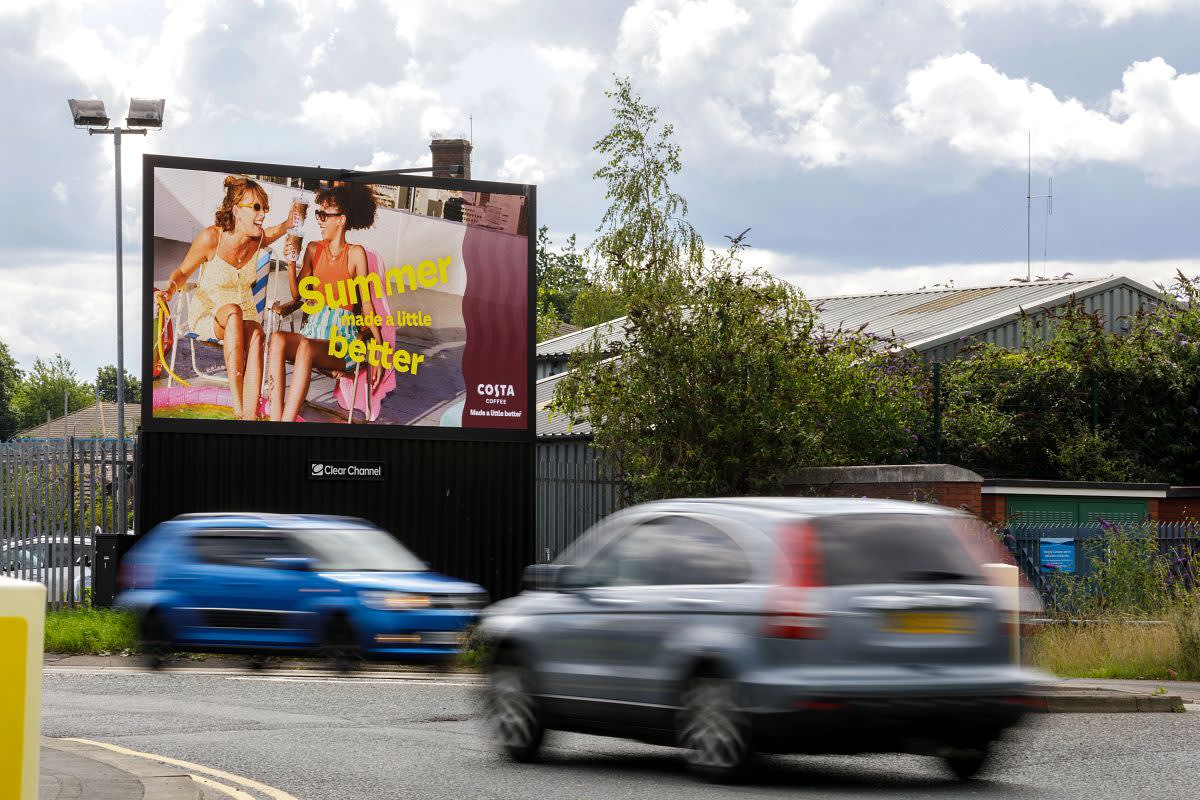
The billboard was made using 2,000 lightbulbs that turned on and off at the signal of an electronic control panel. It was the first time that animated displays had been possible with OOH and the first step towards modern advertising screens as we know them.
Today, DOOH primarily uses LED and LCD displays to deliver a wide range of content. Traditional formats are still possible, but advertisers now have a much greater array of options at their fingertips.
Some of the additional capabilities of DOOH over traditional OOH are:
Video content
Subtle motion
Dynamic messaging
Programmatic buying
Real-time updates
Enhanced reporting
Digital Out of Home has long since overtaken traditional Out of Home in terms of ad spending. As technology and data analytics continue to improve, it’s expected that DOOH spending will continue to grow.
How does DOOH advertising work?
DOOH advertising works by combining elements of digital marketing with traditional Out of Home advertising. Like OOH, DOOH allows advertisers to get their brand in front of real people who are out and about, living their lives.
Most DOOH advertising is distributed via digital signage that’s part of a larger DOOH network. These networks of digital display screens are connected to a central control system. Advertisers can log in to the system and make changes to their DOOH campaign whenever they want to.
Being able to update content, purchase new advertising slots and make other optimisation changes in real-time is one of the ways in which DOOH bears similarities to digital marketing. Campaigns can be run with agility and flexibility, constantly changing to reflect new data.
Advanced targeting is another function that DOOH and digital marketing share. Audience segments can be targeted based on a combination of factors, including location, time of day and contextual triggers.
Advertisers can then tailor their messaging to meet the unique needs of the audience they’re speaking to. But, unlike with digital marketing, there are no ad blockers and no saturated content platforms to penetrate.
In short, DOOH advertising works by serving dynamic ads to targeted audiences in an environment where they’re not competing for attention with too many other streams of information.
The different types of Digital Out of Home
There are a few different types of Digital Out of Home advertising and a few different ways of categorising them.
Environment
The first way of categorising is by environment. DOOH displays are consciously placed in high-traffic areas, where they will be seen by large and diverse audiences. Environments where you can find DOOH include:
Retail
Roadside
Transit
Social
Pedestrian

Formats
You can also categorise by the different DOOH formats available.
Digital billboards
There’s no better way of capturing attention than with a digital billboard, such as our Billboard Live. For an even more unmissable experience, our super-premium Storm digital screens take billboard exposure to the next level.
Digital street furniture
Found on pavements across the UK, digital advertising street furniture offers ground-level access to communities. Displayed on telephone boxes, bus shelters and standalone screens like our Adshel Live, this type of DOOH provides unrivalled flexibility and scalability.
Digital posters
HD digital posters can be placed in almost any environment, offering a direct line to different audience groups. They can be leveraged individually or as part of a larger network within pubs, train stations or supermarkets, for example.
Features
Finally, DOOH can also be split into types based on the features offered.
Interactive
Interactive features have always been possible with OOH, but DOOH extends this capability dramatically. Interactive DOOH uses technology such as gesture and facial recognition, touchscreens, augmented reality and social media integration to build engaging, immersive experiences.
Dynamic
Dynamic content is one of the most popular types of DOOH, as it capitalises on the medium’s ability to deliver the right creative to the right people at the right time. Tailored messaging, real-time contextual triggers and optimised ad schedules mean that dynamic DOOH works just as hard behind the scenes as it does facing the audience.
Programmatic
Programmatic DOOH refers to the automated buying and selling of advertising space. Placements are selected during a real-time auction, informed by various data points and strategic goals. Brands can access entire DOOH networks through a centralised platform, streamlining the process from campaign ideation to implementation.
What are the benefits of Digital Out of Home advertising?
There are several benefits of DOOH advertising:
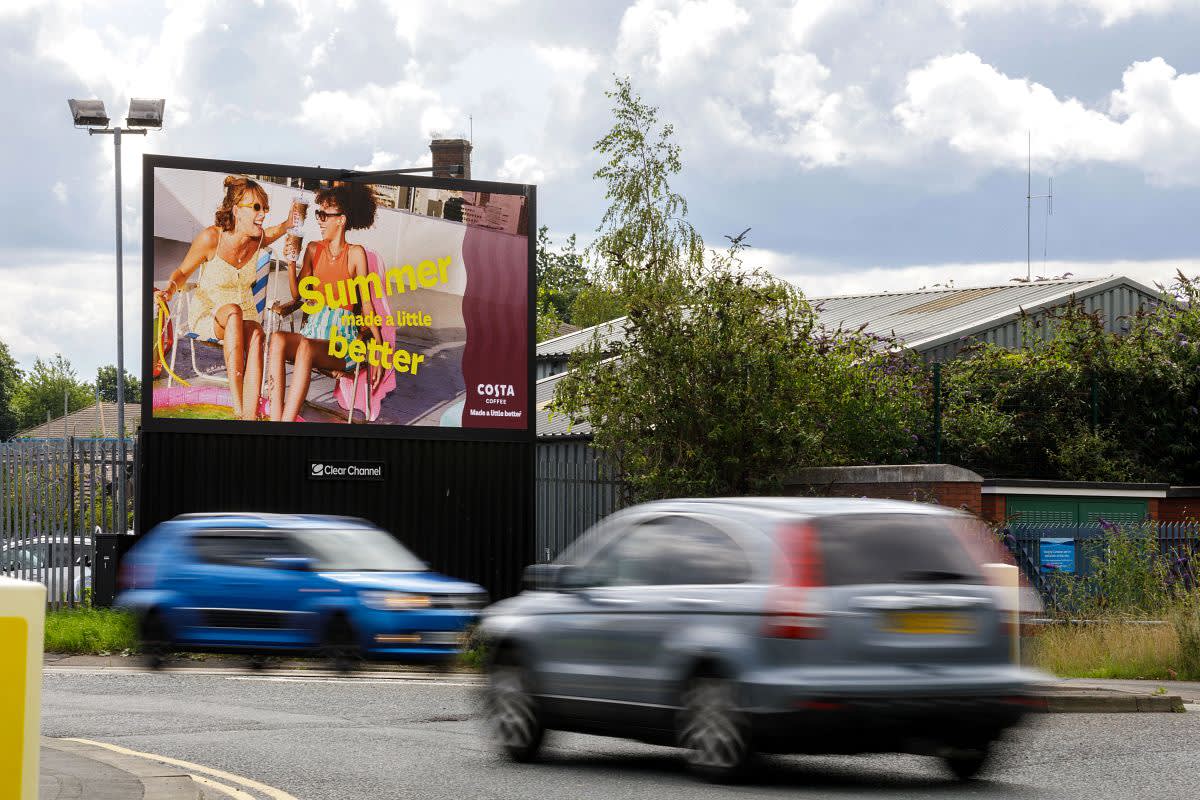
1. Multi-layer audience targeting
DOOH is seen by huge numbers of the public, reaching around 70% of the UK adult population weekly. This extremely broad reach is the reason why DOOH is popular with both start-ups and existing companies looking to build large-scale brand awareness.
But DOOH can also be leveraged to reach much more granular audiences. With tools such as our proprietary Radar platform, advertisers are offered a whole new layer of intelligent targeting options.
Radar integrates audience behaviour, interests and demographics with real-world movement and route patterns. Using this combined data, it deciphers which DOOH sites are best placed to meet the strategic goal.
Brands can therefore target based on niche campaign objectives such as delivering store footfall, increasing brand loyalty and driving cross-channel acquisition.
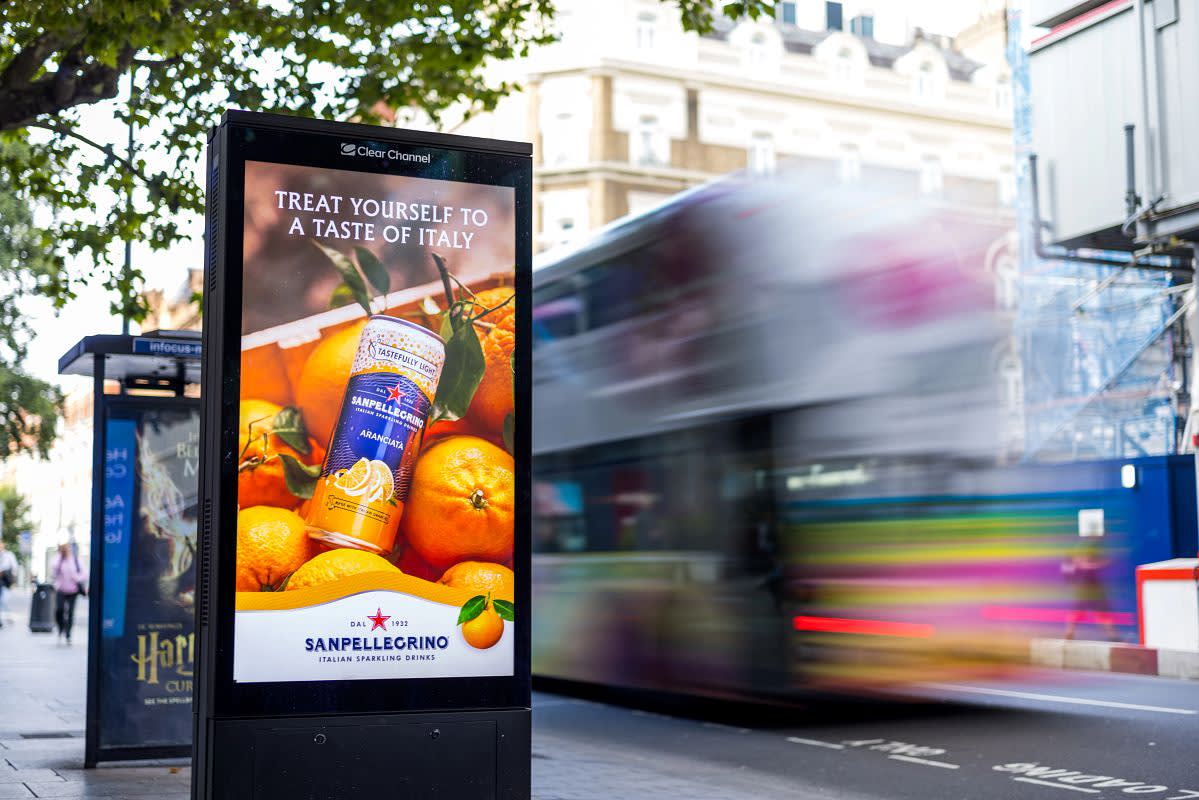
2. Real-time updates
Campaigns run on DOOH displays are usually implemented via a central content management system. This means that strategy planning, creative design and ad scheduling can all be carried out fully remotely.
It also means that changes can easily be made once the campaign has gone live. This capability for real-time updates ensures that advertisers can react quickly to changing circumstances, adapting their creatives, placements and schedules to reflect new insights or trends.
Brand relevance is therefore easier to attain, as messaging can be aligned with a current event or cultural moment. Contextual relevance, which increases campaign effectiveness by 17%, can also be achieved. For example, a coffee shop advertising iced coffees in summer can instantly adapt its messaging to promote hot drinks if it starts to rain.
DOOH campaigns are fluid, cycling through a constant process of optimisation based on previous performance data and fluctuating external factors. And, unlike with traditional Out of Home, all of these changes can be made with no additional printing or installation costs.
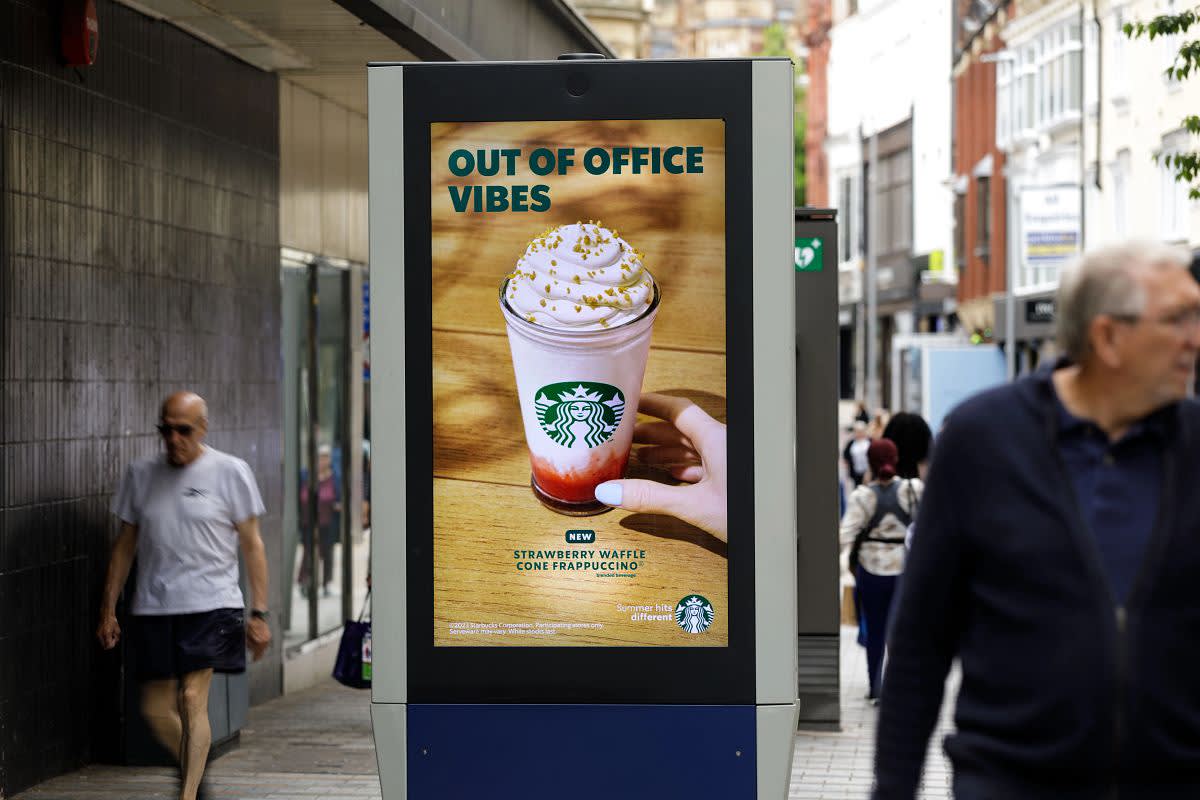
3. Enhanced analytics
DOOH has ushered in a new wave of performance measurement and audience analysis to the world of Out of Home. Aside from the various technologies and methodologies used to provide impression counts, facial recognition sensors can now also be utilised to provide accurate engagement metrics.
These sensors can understand not just whether a person looks directly at an advert, but also how they respond to it. By mapping eye movement, expressions and gestures, they can report mood estimation as well as interaction time, age range and gender.
The level of detail provided by DOOH analytics gives advertisers everything they need to measure success and make data-driven decisions. Campaigns can be planned with greater focus, resources can be used more efficiently, and proof of performance is available at every turn.
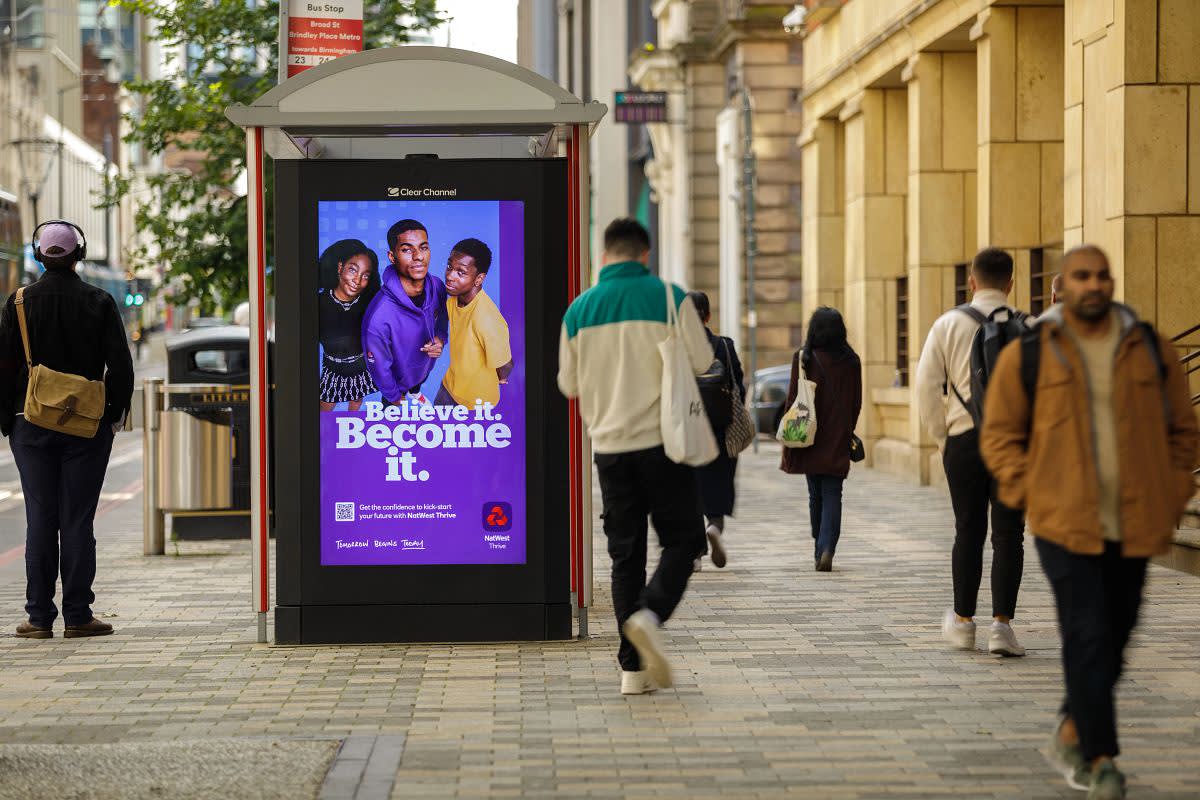
4. Increased engagement
Having so many tools, data sets and campaign parameters at their disposal empowers advertisers to create campaigns that produce high levels of engagement. Contextually relevant messaging is one way of doing this, but DOOH’s dynamic content capabilities can also be used to deliver hyper-targeted messaging to similar effect.
For example, a clothing brand could tailor its messaging to different demographics based on time of day. During commuter hours, one set of creatives advertising their workwear collection would be run. In the evening, the creative would flip to show items from their going-out collection.
Another way in which DOOH increases engagement is through interactive features. From touchscreens to augmented reality to gesture recognition technology, there are plenty of opportunities to get creative and encourage participation.
DOOH can also foster interaction with other channels, such as social media. Audiences can live tweet and see their post instantly displayed onscreen, or interact with a facial recognition sensor for the chance to receive a website discount code.
Is DOOH cost-effective?
Out of Home advertising has consistently been one of the most cost-effective channels for marketers, and DOOH is no exception. In fact, research shows that when DOOH’s share of a media budget is raised, an incremental ROI of 46p for £1 spent is delivered.
When we consider DOOH’s ability to capture the attention of huge numbers of people, this is hardly surprising. Dynamic and interactive content help to drive elevated levels of engagement, while consumer action increases by 16% following exposure to contextually relevant DOOH.
DOOH advertising rates are relatively low, as there are no printing or installation costs. Costs are also saved in other areas – manual work is reduced thanks to programmatic buying, and ad scheduling ensures that budget is only spent when and where it will be effective.
Getting the most out of DOOH advertising
DOOH statistics paint an incredibly persuasive picture but they’re not the whole story. In order to get the most out of Digital Out of Home, advertisers have to use the medium to its full potential.
Above all else, this means following an audience-centric approach. Our favourite examples of DOOH campaigns all put the audience at the heart of their strategies, resulting in campaigns that resonate with the people they’re intended for.
Following creative best practices for DOOH is another important factor in performance. Keeping the message simple and concise, using an eye-catching design, maintaining brand consistency and including a clear CTA will set you on the road to success.
The creative impact can be maximised by employing interactive features, dynamic content and other emerging DOOH trends. Using these tools – but maintaining a laser focus on your audience’s needs – will ensure that your ads grab attention, incite action and leave a lasting impression.
Kickstart your DOOH campaign
Digital Out of Home advertising is OOH 2.0, bringing the tried, tested and trusted medium into the modern age. In an ever-evolving marketing landscape, DOOH offers advertisers a proven way of connecting with audiences while staying ahead of the technological curve.
If you’re looking to kickstart your DOOH campaign and are wondering what the next step is, you can get in touch with us for a no-obligation chat.
Whether you want to run a national-scale coordinated campaign across many formats and locations, or a smaller campaign targeted at a niche audience, our team will happily discuss how to best reach your marketing goals.
Start your DOOH campaign
Interested in learning more about DOOH advertising? Fill in our form and one of our team will be in contact shortly to answer your questions and get started on your next campaign.


